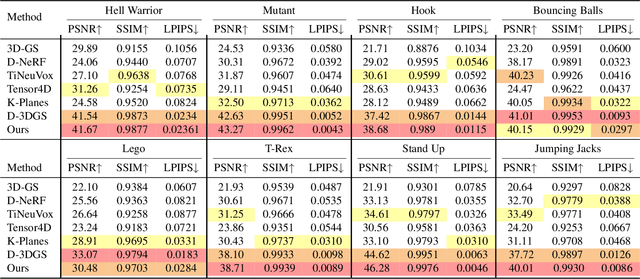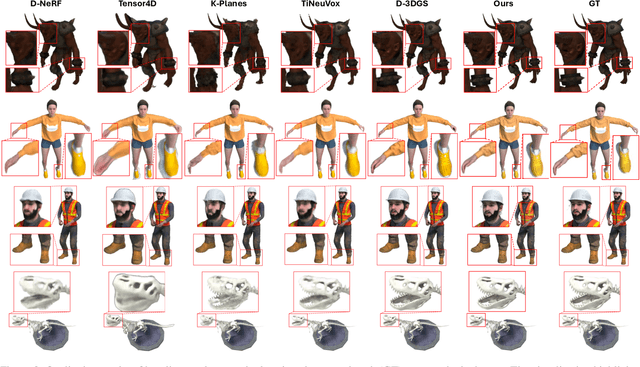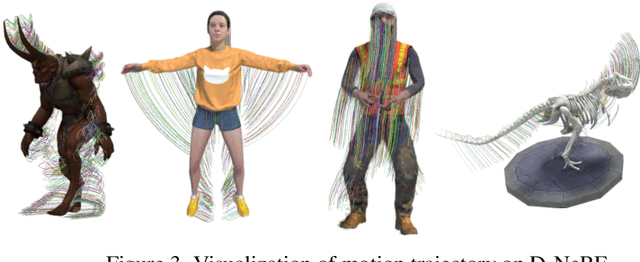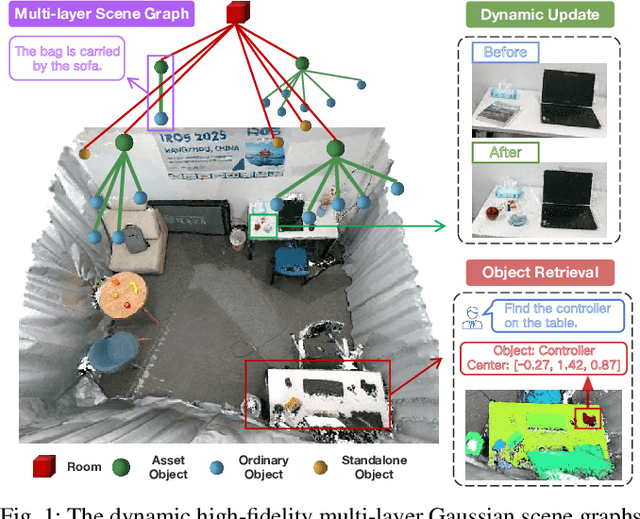Xuesong Li
Quality-Driven and Diversity-Aware Sample Expansion for Robust Marine Obstacle Segmentation
Dec 16, 2025Abstract:Marine obstacle detection demands robust segmentation under challenging conditions, such as sun glitter, fog, and rapidly changing wave patterns. These factors degrade image quality, while the scarcity and structural repetition of marine datasets limit the diversity of available training data. Although mask-conditioned diffusion models can synthesize layout-aligned samples, they often produce low-diversity outputs when conditioned on low-entropy masks and prompts, limiting their utility for improving robustness. In this paper, we propose a quality-driven and diversity-aware sample expansion pipeline that generates training data entirely at inference time, without retraining the diffusion model. The framework combines two key components:(i) a class-aware style bank that constructs high-entropy, semantically grounded prompts, and (ii) an adaptive annealing sampler that perturbs early conditioning, while a COD-guided proportional controller regulates this perturbation to boost diversity without compromising layout fidelity. Across marine obstacle benchmarks, augmenting training data with these controlled synthetic samples consistently improves segmentation performance across multiple backbones and increases visual variation in rare and texture-sensitive classes.
Structural Energy-Guided Sampling for View-Consistent Text-to-3D
Aug 23, 2025Abstract:Text-to-3D generation often suffers from the Janus problem, where objects look correct from the front but collapse into duplicated or distorted geometry from other angles. We attribute this failure to viewpoint bias in 2D diffusion priors, which propagates into 3D optimization. To address this, we propose Structural Energy-Guided Sampling (SEGS), a training-free, plug-and-play framework that enforces multi-view consistency entirely at sampling time. SEGS defines a structural energy in a PCA subspace of intermediate U-Net features and injects its gradients into the denoising trajectory, steering geometry toward the intended viewpoint while preserving appearance fidelity. Integrated seamlessly into SDS/VSD pipelines, SEGS significantly reduces Janus artifacts, achieving improved geometric alignment and viewpoint consistency without retraining or weight modification.
3D Gaussian Representations with Motion Trajectory Field for Dynamic Scene Reconstruction
Aug 10, 2025



Abstract:This paper addresses the challenge of novel-view synthesis and motion reconstruction of dynamic scenes from monocular video, which is critical for many robotic applications. Although Neural Radiance Fields (NeRF) and 3D Gaussian Splatting (3DGS) have demonstrated remarkable success in rendering static scenes, extending them to reconstruct dynamic scenes remains challenging. In this work, we introduce a novel approach that combines 3DGS with a motion trajectory field, enabling precise handling of complex object motions and achieving physically plausible motion trajectories. By decoupling dynamic objects from static background, our method compactly optimizes the motion trajectory field. The approach incorporates time-invariant motion coefficients and shared motion trajectory bases to capture intricate motion patterns while minimizing optimization complexity. Extensive experiments demonstrate that our approach achieves state-of-the-art results in both novel-view synthesis and motion trajectory recovery from monocular video, advancing the capabilities of dynamic scene reconstruction.
Vibration-Based Energy Metric for Restoring Needle Alignment in Autonomous Robotic Ultrasound
Aug 09, 2025Abstract:Precise needle alignment is essential for percutaneous needle insertion in robotic ultrasound-guided procedures. However, inherent challenges such as speckle noise, needle-like artifacts, and low image resolution make robust needle detection difficult, particularly when visibility is reduced or lost. In this paper, we propose a method to restore needle alignment when the ultrasound imaging plane and the needle insertion plane are misaligned. Unlike many existing approaches that rely heavily on needle visibility in ultrasound images, our method uses a more robust feature by periodically vibrating the needle using a mechanical system. Specifically, we propose a vibration-based energy metric that remains effective even when the needle is fully out of plane. Using this metric, we develop a control strategy to reposition the ultrasound probe in response to misalignments between the imaging plane and the needle insertion plane in both translation and rotation. Experiments conducted on ex-vivo porcine tissue samples using a dual-arm robotic ultrasound-guided needle insertion system demonstrate the effectiveness of the proposed approach. The experimental results show the translational error of 0.41$\pm$0.27 mm and the rotational error of 0.51$\pm$0.19 degrees.
Speckle2Self: Self-Supervised Ultrasound Speckle Reduction Without Clean Data
Jul 09, 2025



Abstract:Image denoising is a fundamental task in computer vision, particularly in medical ultrasound (US) imaging, where speckle noise significantly degrades image quality. Although recent advancements in deep neural networks have led to substantial improvements in denoising for natural images, these methods cannot be directly applied to US speckle noise, as it is not purely random. Instead, US speckle arises from complex wave interference within the body microstructure, making it tissue-dependent. This dependency means that obtaining two independent noisy observations of the same scene, as required by pioneering Noise2Noise, is not feasible. Additionally, blind-spot networks also cannot handle US speckle noise due to its high spatial dependency. To address this challenge, we introduce Speckle2Self, a novel self-supervised algorithm for speckle reduction using only single noisy observations. The key insight is that applying a multi-scale perturbation (MSP) operation introduces tissue-dependent variations in the speckle pattern across different scales, while preserving the shared anatomical structure. This enables effective speckle suppression by modeling the clean image as a low-rank signal and isolating the sparse noise component. To demonstrate its effectiveness, Speckle2Self is comprehensively compared with conventional filter-based denoising algorithms and SOTA learning-based methods, using both realistic simulated US images and human carotid US images. Additionally, data from multiple US machines are employed to evaluate model generalization and adaptability to images from unseen domains. \textit{Code and datasets will be released upon acceptance.
Semantic Scene Graph for Ultrasound Image Explanation and Scanning Guidance
Jun 24, 2025Abstract:Understanding medical ultrasound imaging remains a long-standing challenge due to significant visual variability caused by differences in imaging and acquisition parameters. Recent advancements in large language models (LLMs) have been used to automatically generate terminology-rich summaries orientated to clinicians with sufficient physiological knowledge. Nevertheless, the increasing demand for improved ultrasound interpretability and basic scanning guidance among non-expert users, e.g., in point-of-care settings, has not yet been explored. In this study, we first introduce the scene graph (SG) for ultrasound images to explain image content to ordinary and provide guidance for ultrasound scanning. The ultrasound SG is first computed using a transformer-based one-stage method, eliminating the need for explicit object detection. To generate a graspable image explanation for ordinary, the user query is then used to further refine the abstract SG representation through LLMs. Additionally, the predicted SG is explored for its potential in guiding ultrasound scanning toward missing anatomies within the current imaging view, assisting ordinary users in achieving more standardized and complete anatomical exploration. The effectiveness of this SG-based image explanation and scanning guidance has been validated on images from the left and right neck regions, including the carotid and thyroid, across five volunteers. The results demonstrate the potential of the method to maximally democratize ultrasound by enhancing its interpretability and usability for ordinaries.
Dynamic Legged Ball Manipulation on Rugged Terrains with Hierarchical Reinforcement Learning
Apr 21, 2025Abstract:Advancing the dynamic loco-manipulation capabilities of quadruped robots in complex terrains is crucial for performing diverse tasks. Specifically, dynamic ball manipulation in rugged environments presents two key challenges. The first is coordinating distinct motion modalities to integrate terrain traversal and ball control seamlessly. The second is overcoming sparse rewards in end-to-end deep reinforcement learning, which impedes efficient policy convergence. To address these challenges, we propose a hierarchical reinforcement learning framework. A high-level policy, informed by proprioceptive data and ball position, adaptively switches between pre-trained low-level skills such as ball dribbling and rough terrain navigation. We further propose Dynamic Skill-Focused Policy Optimization to suppress gradients from inactive skills and enhance critical skill learning. Both simulation and real-world experiments validate that our methods outperform baseline approaches in dynamic ball manipulation across rugged terrains, highlighting its effectiveness in challenging environments. Videos are on our website: dribble-hrl.github.io.
Enhancing Features in Long-tailed Data Using Large Vision Mode
Apr 15, 2025Abstract:Language-based foundation models, such as large language models (LLMs) or large vision-language models (LVLMs), have been widely studied in long-tailed recognition. However, the need for linguistic data is not applicable to all practical tasks. In this study, we aim to explore using large vision models (LVMs) or visual foundation models (VFMs) to enhance long-tailed data features without any language information. Specifically, we extract features from the LVM and fuse them with features in the baseline network's map and latent space to obtain the augmented features. Moreover, we design several prototype-based losses in the latent space to further exploit the potential of the augmented features. In the experimental section, we validate our approach on two benchmark datasets: ImageNet-LT and iNaturalist2018.
Prompt-Guided Dual-Path UNet with Mamba for Medical Image Segmentation
Mar 25, 2025Abstract:Convolutional neural networks (CNNs) and transformers are widely employed in constructing UNet architectures for medical image segmentation tasks. However, CNNs struggle to model long-range dependencies, while transformers suffer from quadratic computational complexity. Recently, Mamba, a type of State Space Models, has gained attention for its exceptional ability to model long-range interactions while maintaining linear computational complexity. Despite the emergence of several Mamba-based methods, they still present the following limitations: first, their network designs generally lack perceptual capabilities for the original input data; second, they primarily focus on capturing global information, while often neglecting local details. To address these challenges, we propose a prompt-guided CNN-Mamba dual-path UNet, termed PGM-UNet, for medical image segmentation. Specifically, we introduce a prompt-guided residual Mamba module that adaptively extracts dynamic visual prompts from the original input data, effectively guiding Mamba in capturing global information. Additionally, we design a local-global information fusion network, comprising a local information extraction module, a prompt-guided residual Mamba module, and a multi-focus attention fusion module, which effectively integrates local and global information. Furthermore, inspired by Kolmogorov-Arnold Networks (KANs), we develop a multi-scale information extraction module to capture richer contextual information without altering the resolution. We conduct extensive experiments on the ISIC-2017, ISIC-2018, DIAS, and DRIVE. The results demonstrate that the proposed method significantly outperforms state-of-the-art approaches in multiple medical image segmentation tasks.
DynamicGSG: Dynamic 3D Gaussian Scene Graphs for Environment Adaptation
Feb 21, 2025



Abstract:In real-world scenarios, the environment changes caused by agents or human activities make it extremely challenging for robots to perform various long-term tasks. To effectively understand and adapt to dynamic environments, the perception system of a robot needs to extract instance-level semantic information, reconstruct the environment in a fine-grained manner, and update its environment representation in memory according to environment changes. To address these challenges, We propose \textbf{DynamicGSG}, a dynamic, high-fidelity, open-vocabulary scene graph generation system leveraging Gaussian splatting. Our system comprises three key components: (1) constructing hierarchical scene graphs using advanced vision foundation models to represent the spatial and semantic relationships of objects in the environment, (2) designing a joint feature loss to optimize the Gaussian map for incremental high-fidelity reconstruction, and (3) updating the Gaussian map and scene graph according to real environment changes for long-term environment adaptation. Experiments and ablation studies demonstrate the performance and efficacy of the proposed method in terms of semantic segmentation, language-guided object retrieval, and reconstruction quality. Furthermore, we have validated the dynamic updating capabilities of our system in real laboratory environments. The source code will be released at:~\href{https://github.com/GeLuzhou/Dynamic-GSG}{https://github.com/GeLuzhou/DynamicGSG}.
 Add to Chrome
Add to Chrome Add to Firefox
Add to Firefox Add to Edge
Add to Edge